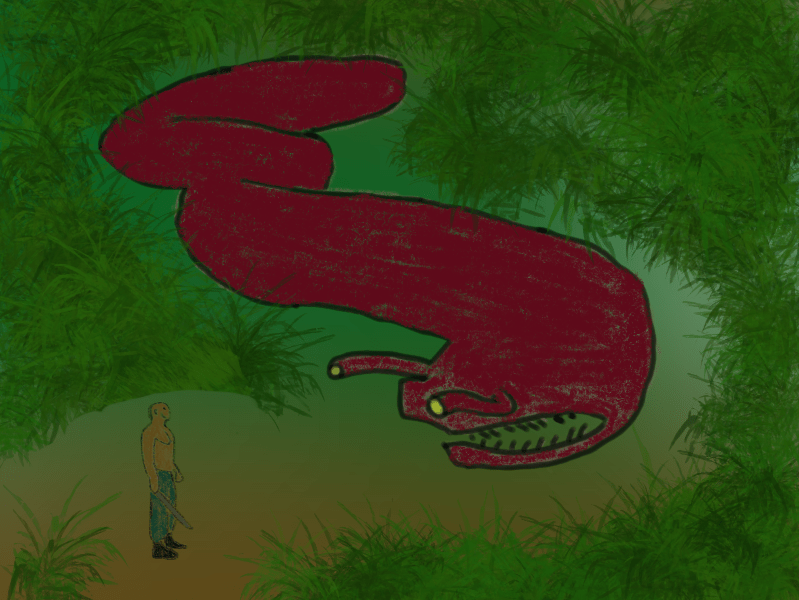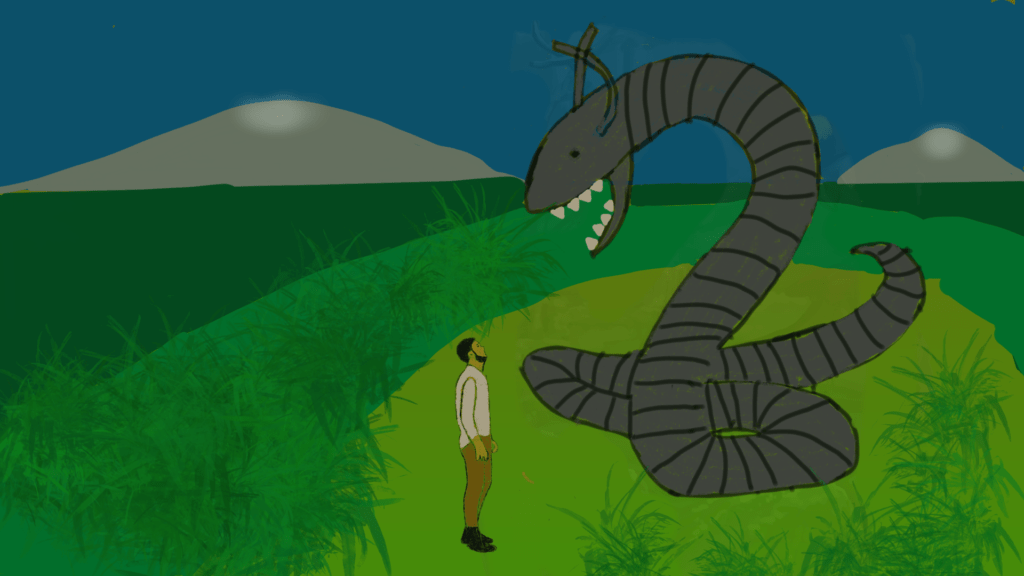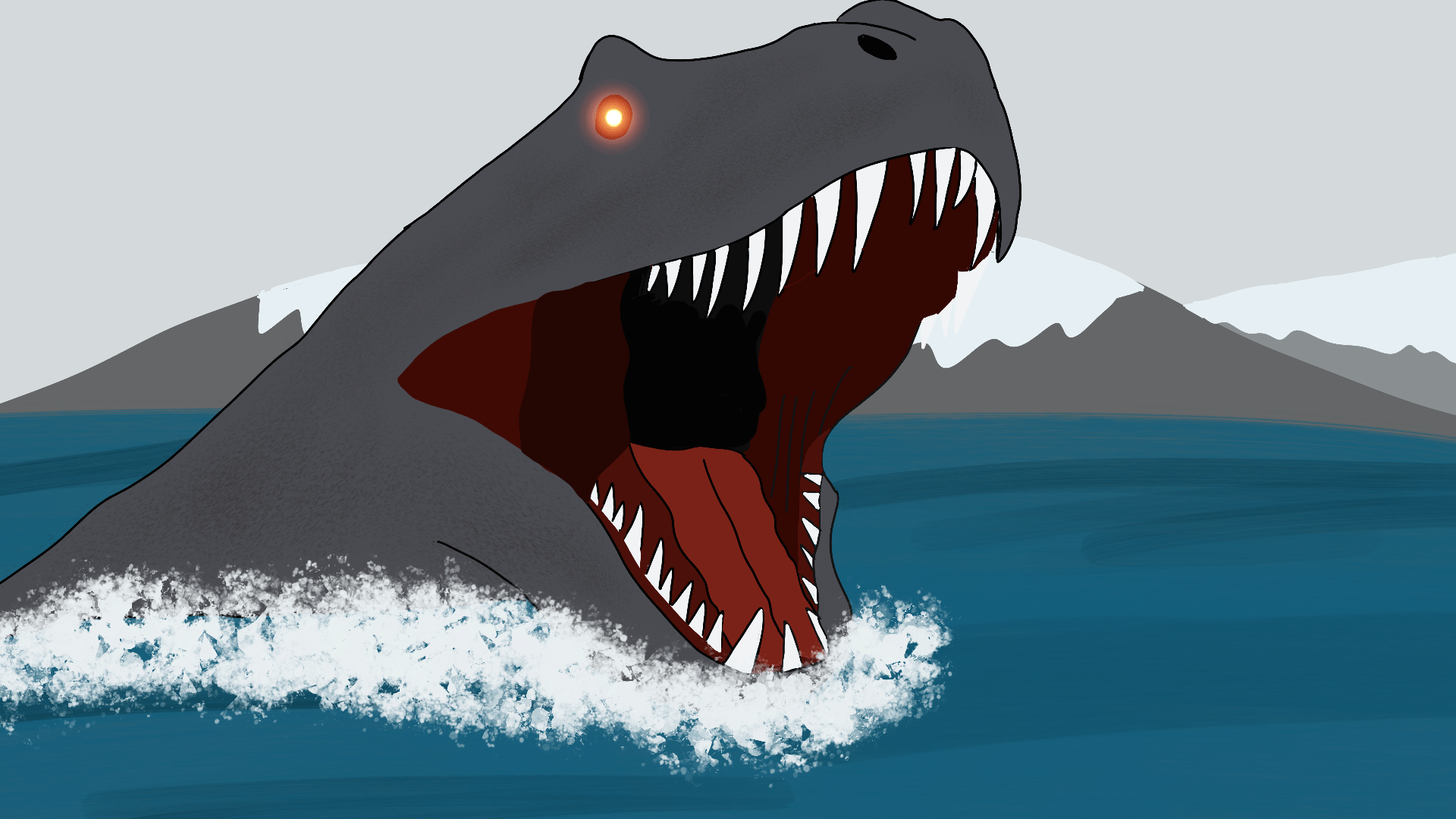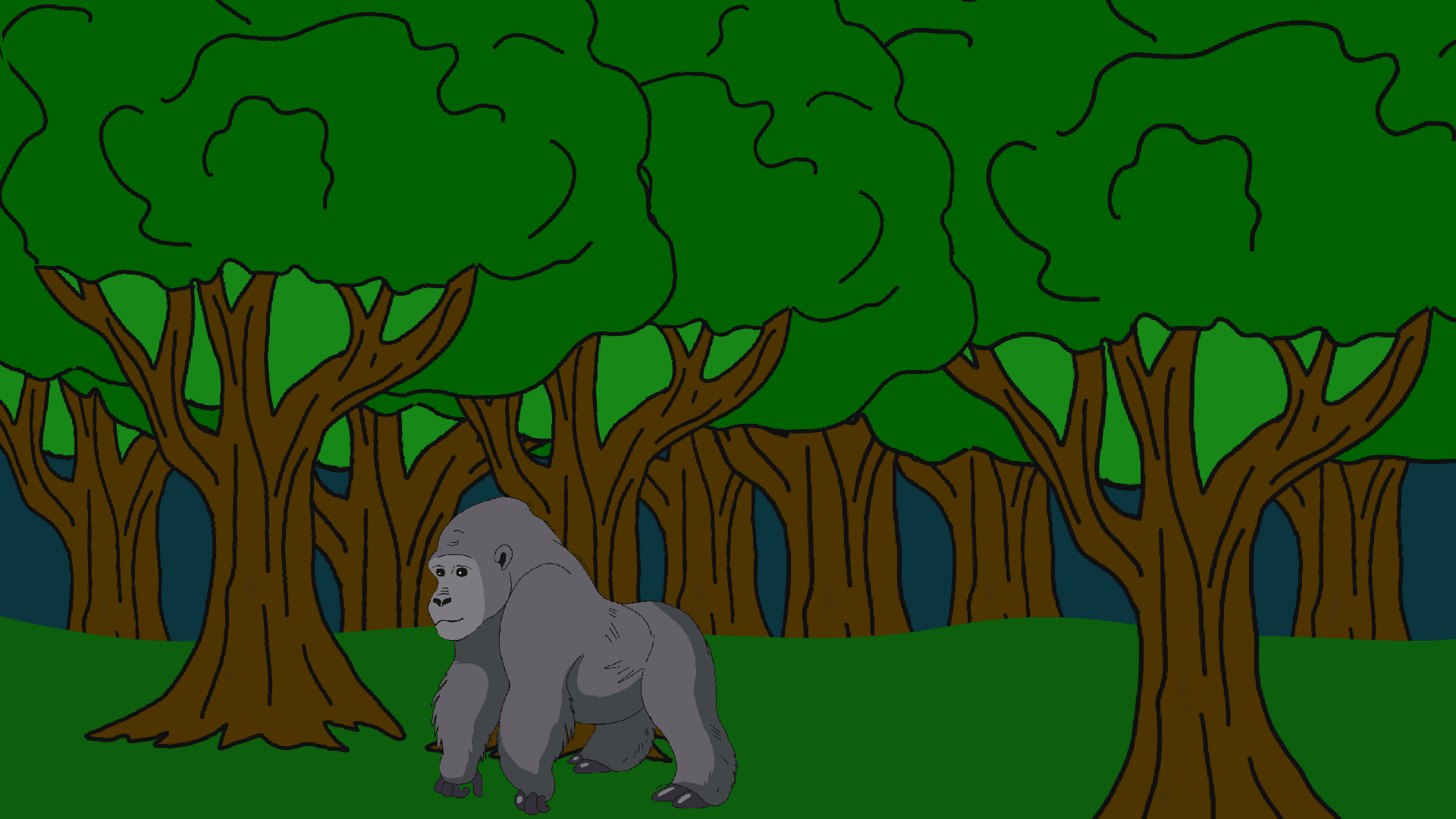
Too often, scientists quickly dismiss many cryptids as folklore. They point to many things, such as lack of a body, few witness sightings and other factors that don’t support the existence of the creature. However, just because a creature is extinct now, doesn’t mean it didn’t exist at one point in human history. We’ve seen this with many creatures such as the massive Titanoboa snakes scientists dismiss as just tall tales.
While there’s much debate over many animals thought extinct, one thing is clear, earth has had some dangerous and scary creatures throughout history.
As recent sightings have dropped though, many quickly dismiss this animal as simple folklore. However, as we will see, there’s good reason to believe this massive monster did indeed exist and existed not too long ago.
This creature is known as the Minhocão.
Minhocão is described as a large earthworm type cryptid that once existed or perhaps still exists in the jungles of South America. It resembles a giant worm, with scaly black skin, has a mouth and also has a strange pair of tentacle-like structures protruding from its head. Some say it has a pig-like snout. Some accounts show the cryptid as being 40 feet while other witnesses say it is easily over 100 feet.
Much is not known about the creature, but many theories exist as to its behavior and where it lives.

It is believed to be animal that burrows, producing extremely deep trenches as it digs. From these tracks, many estimate the body width to be around ten feet.
Reportedly, houses and other structures have collapsed due to the Minhocão burrowing underneath. The creature is also known to alter waterways with the deep paths that it produces. The tunnels made by the animal are said to occur most often after heavy rain indicating that the minhocão is more active during heavy rains. Some believe they only come out in the rain.
Many say the lack of sightings by humans was explained by the Minhocão having “retiring habits” or going under the ground. It is also reported by some to attack other large animals, and while in the water to attack from below.
Although there hasn’t been a documented sighting of the creature in 130 years, that certainly wasn’t the case in the 1800’s and prior.
in December 1846, French naturalist Augustin Saint-Hilaire recalled stories of the Minhocão in the Padre Aranda and Feia lakes in Brazil. He and others had been told about the creature by locals Tribes in Brazil when they arrived .
Aranda witnessed the creature and said they lived in the lakes and had “often drag horses and horned cattle under the water”. He believed ‘Minhocão’ to be related to the ‘minhocoa’, Portuguese for earthworm.
Decades later more documented writings would occur.
In 1878 German naturalist Dr. Fritz Müller, summarized in Nature, a scientific journal, the Minhacao. This article was largely based on the sightings by Curitibanos resident Senhor Lebino. in May of that year, Müller said he was contemplating bring a dead corpse of one over to Europe. It garnered much Interest, with a London newspaper proposing in the early 20th century to send an expedition to Brazil to find out if the Minhocão actually exists.
In the article, Lebino claimed the monster lived in the highlands in the South of the country and he described as a “gigantic earth worm, 50 yards [46 m] in length and covered with bones, as it were with a coat of mail”,
Another sighting came from Francisco de Amaral Varella, who stated that the creature had a snout like a pig.
Other sightings would occur and variations on features and size would vary. One account said the creature had a horn.
In 1849, there was a claimed sighting of a Minhocão corpse that was discovered. It was said to have skin which was “as thick as the bark of a pine tree, and formed of hard scales like those of an armadillo“
Various theories exist as to what the creature is exactly.
In the book, “On the Track of Unknown Animals”, Bernard Heuvelmans suggests that the animal may be a surviving glyptodon. Glyptodon were giant Armadillos that once existed that were the size of a car. However, critics of this theory point out that there is quite a difference between what’s seen and this prehistoric creature. Also, there’s no evidence these prehistoric creatures displayed burrowing behavior.
Another theory comes from Cryptozoologist Karl Shuker. He suggested that this animal may be an example of a giant caecilian. Caecilians are amphibians with worm-like, limbless bodies, subterranean/aquatic habits and tentacle-like sense organs on the head. Moreover, many caecilians live in the jungles of South America. This does fit the description of the minhocão quite well. Still skeptics will point out that caecilians are not even close to the size of this animal.
While it’s not entirely clear what this monster is or if it still exists, its evident that back in the 1800’s and prior, there were many reports surrounding the creature. In this episode, we have only discussed the documented reports meaning reports by the few Europeans who ventured into the jungles of Brazil.
It should be said that many more reports could exist if there was documentation from local tribes. Also, we can speculate that this creature is primarily composed of soft tissue and perhaps that’s why bones have never been found of it. It’s also important to note that these creatures lived deep in the jungles, not a place many ventures too.
The final question remains though, could this cryptid still exist today? Admittedly, the evidence is somewhat against it as there hasn’t been a documented sighting in 130 years with many more non-natives exploring the jungle.
Still, the Amazon is a massive dense jungle, and its surely possible these creatures spend the majority of their time underground. Even more so, if they live underground in the dark, we can guess that they might only come out at night and as discussed earlier, primarily come out in deep downpours.
From this, it’s at least plausible to believe they could exist as Those dark and wet conditions are not exactly the ideal environment for humans to witness the creature.




Very interesting information!Perfect just what I was looking for! “Neurotics build castles in the air, psychotics live in them. My mother cleans them.” by Rita Rudner.